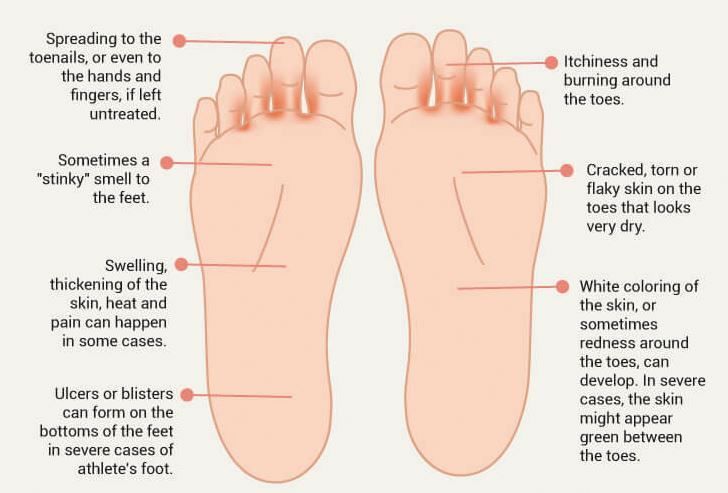Black spots bottom of foot. Tinea Nigra: Causes, Symptoms, and Treatment of Dark Spots on Feet and Hands
What is tinea nigra. How does it manifest on the skin. What causes this rare fungal infection. How is tinea nigra diagnosed and treated. Can tinea nigra be prevented.
Understanding Tinea Nigra: A Rare Fungal Infection
Tinea nigra is an uncommon fungal infection that primarily affects the skin of the hands and feet. This condition is characterized by the appearance of brown or black patches on the palms or soles, and in rare cases, on the torso. The primary culprit behind tinea nigra infections is a type of yeast known as Hortaea werneckii, although another yeast called Stenella araguata may also be responsible in some instances.
The infection typically occurs when the yeast enters the body through small wounds or breaks in the skin. While tinea nigra may seem alarming due to its appearance, it’s important to note that it’s generally harmless and doesn’t pose significant health risks in healthy individuals.
Identifying Symptoms: The Telltale Signs of Tinea Nigra
Recognizing the symptoms of tinea nigra is crucial for early detection and treatment. The most common signs include:

- A single round, linear, or irregularly shaped patch on the foot or hand
- Slow-growing brown or black patches that may resemble a mole or freckle
- Patches that are often asymptomatic but may occasionally itch
- In rare cases, a slow-growing brown patch on the torso
Is tinea nigra always noticeable? Not necessarily. The patches can sometimes be so small and faint that they go undetected for a while. Additionally, tinea nigra typically manifests as a single lesion, but multiple patches may appear if the fungus enters through several entry points.
Risk Factors: Who is Most Susceptible to Tinea Nigra?
While tinea nigra can affect anyone, certain factors increase the likelihood of developing this infection:
- Living in or traveling to tropical or subtropical regions
- Being under the age of 20
- Having a history of hyperhidrosis (excessive sweating)
- Recent injuries or wounds on the hands or feet
- Frequent contact with wood, soil, or compost, especially in tropical areas
Why do these factors increase the risk? Hortaea werneckii thrives in moist, humid environments and is commonly found in soil and decaying organic matter. Consequently, those who live in or visit tropical regions or engage in activities that expose them to these environments are at higher risk.

Diagnosis: Confirming Tinea Nigra Infection
Accurate diagnosis of tinea nigra is essential, as its symptoms can mimic other skin conditions. How do doctors diagnose tinea nigra?
- Clinical examination: A doctor will assess the appearance and location of the patches
- Patient history: Questions about recent travel, injuries, and exposure to potential sources of infection
- Skin culture: A sample of the affected skin is sent to a lab to check for Hortaea werneckii growth
- Skin biopsy: In some cases, to rule out skin cancer or other conditions
The skin culture is particularly important, as the presence of Hortaea werneckii growth within a week confirms the diagnosis of tinea nigra.
Treatment Options: Addressing Tinea Nigra Effectively
Once diagnosed, tinea nigra can be treated through various methods. What are the most effective treatments for tinea nigra?
- Topical antifungal creams: The primary treatment prescribed by doctors
- Oral antifungal medications: Used in cases of large lesions or when topical treatments fail
- Keratolytic agents: Home remedies that may help, including wart creams, salicylic acid, and Whitfield’s ointment
How long does treatment typically last? While the optimal duration is not definitively established, some reports suggest that a month of treatment is often sufficient. It’s crucial to follow the doctor’s instructions precisely when applying any prescribed medications.

Caution for Pregnant Women
Are home remedies safe for everyone? Women who are pregnant or trying to conceive should consult a doctor before using any keratolytic agents, as these may not be safe during pregnancy.
Prevention Strategies: Minimizing the Risk of Tinea Nigra
While tinea nigra isn’t severe, prevention is always preferable. How can one reduce the risk of contracting tinea nigra?
- Practice frequent handwashing, especially after outdoor activities
- Wear protective gear such as gloves when gardening
- Avoid walking barefoot outdoors, particularly in tropical regions
- Wear socks or shoes in public places
- Change socks frequently, especially if they become wet
- Cover any cuts or wounds on hands and feet
These preventive measures are particularly important for those living in or traveling to tropical areas where the Hortaea werneckii fungus is more prevalent.
Differential Diagnosis: Conditions That Mimic Tinea Nigra
Given the distinctive appearance of tinea nigra, it’s crucial to differentiate it from other conditions that may present similarly. What other conditions might be mistaken for tinea nigra?

- Melanoma: A serious form of skin cancer
- Junctional nevus: A type of mole
- Addison’s disease: An endocrine disorder that can cause skin discoloration
- Fixed drug eruption: A type of drug allergy that can cause skin patches
- Pinta: A tropical infection caused by Treponema carateum
Due to these potential mimics, especially the possibility of melanoma, it’s crucial to seek professional medical evaluation for any new or changing skin discolorations.
The Importance of Professional Diagnosis
Why is professional diagnosis so important? While tinea nigra is generally harmless, some of the conditions it mimics, particularly melanoma, can be life-threatening if left untreated. A dermatologist can perform the necessary tests to rule out these more serious conditions and provide appropriate treatment.
Tinea Nigra in Different Populations: Variations and Considerations
While tinea nigra can affect anyone, its prevalence and presentation may vary among different populations. How does tinea nigra manifest in various groups?

- Children and adolescents: More commonly affected, possibly due to increased outdoor activities
- Adults: Less frequent, but may occur in those with risk factors
- Immunocompromised individuals: Potentially at higher risk for more severe or persistent infections
- Tropical residents: Higher incidence due to environmental factors
Does tinea nigra affect all skin types equally? While the infection can occur in individuals of any skin tone, the contrast of the dark patches may be more noticeable on lighter skin, potentially leading to earlier detection.
Gender Differences in Tinea Nigra
Is there a gender disparity in tinea nigra infections? Some studies suggest a slightly higher prevalence in females, but the reasons for this are not fully understood. It may be related to differences in activities or skincare practices rather than biological factors.
The Science Behind Tinea Nigra: Understanding the Fungus
To truly comprehend tinea nigra, it’s essential to understand the organism causing it. What makes Hortaea werneckii unique among fungi?

- Halophilic nature: Thrives in salty environments
- Melanin production: Gives the characteristic dark color to the patches
- Superficial infection: Typically doesn’t penetrate deep into the skin
- Slow growth: Contributes to the gradual appearance of symptoms
How does the fungus interact with human skin? Hortaea werneckii colonizes the outermost layer of the skin (stratum corneum), feeding on dead skin cells without invading deeper layers. This superficial nature contributes to the generally benign nature of the infection.
Evolution and Adaptability of Hortaea werneckii
What makes Hortaea werneckii so adaptable to various environments? This fungus has evolved to survive in extreme conditions, including high salinity and varying pH levels. These adaptations allow it to thrive in diverse environments, from sea water to human skin, making it a remarkably versatile organism.
Tinea Nigra and Global Climate Change: Potential Future Implications
As global temperatures rise and climate patterns shift, the distribution of many organisms, including fungi, is changing. How might climate change affect the prevalence of tinea nigra?

- Expanding habitat: Warmer temperatures could expand the range of Hortaea werneckii
- Increased humidity: Climate change may lead to more humid conditions, favoring fungal growth
- Changes in human behavior: Altered lifestyles due to climate change could increase exposure risk
- Ecosystem shifts: Changes in soil composition and vegetation could affect fungal populations
Could tinea nigra become more common in traditionally temperate regions? As climates warm and become more humid, areas previously unsuitable for Hortaea werneckii may become hospitable, potentially leading to an increase in tinea nigra cases in new geographical locations.
The Need for Continued Surveillance
Why is ongoing monitoring of tinea nigra important in the context of climate change? Tracking the prevalence and distribution of tinea nigra can serve as an indicator of broader ecological changes. It may also help health systems prepare for potential increases in cases in areas where the infection was previously rare.

Tinea Nigra in the Context of Global Health
While tinea nigra is generally considered a benign condition, its study contributes to our broader understanding of fungal infections and global health patterns. How does research on tinea nigra benefit the wider field of medical mycology?
- Improved diagnostic techniques: Studying tinea nigra helps refine methods for identifying fungal infections
- Antifungal drug development: Research may contribute to the creation of new antifungal treatments
- Environmental health indicators: Prevalence can reflect changes in environmental conditions
- Public health preparedness: Understanding its spread helps in preparing for other emerging fungal threats
Can lessons from tinea nigra be applied to more serious fungal infections? Indeed, the study of tinea nigra’s transmission, growth, and treatment can provide insights applicable to managing more severe fungal infections, particularly those that thrive in similar environmental conditions.
One Health Approach to Tinea Nigra
How does tinea nigra fit into the “One Health” concept? The One Health approach recognizes the interconnectedness of human, animal, and environmental health. Tinea nigra, with its environmental reservoirs and ability to infect humans, exemplifies the need for this integrated approach to health and disease management.

Future Research Directions in Tinea Nigra
While much is known about tinea nigra, there are still areas that warrant further investigation. What are some promising avenues for future research on tinea nigra?
- Genetic susceptibility: Investigating why some individuals are more prone to infection
- Novel treatment approaches: Exploring new antifungal agents or treatment modalities
- Environmental factors: Deeper understanding of the ecological niches of Hortaea werneckii
- Host-pathogen interactions: Studying how the fungus interacts with human skin at a molecular level
- Global distribution patterns: Monitoring changes in prevalence and geographical spread
Could tinea nigra research lead to breakthroughs in other areas of medicine? Absolutely. The unique properties of Hortaea werneckii, such as its melanin production and salt tolerance, could have applications in fields ranging from biotechnology to environmental science.
The Role of Genomics in Tinea Nigra Research
How might genomic studies enhance our understanding of tinea nigra? Genomic analysis of both the fungus and affected individuals could reveal insights into the infection process, virulence factors, and potential targets for more effective treatments. It may also help in developing more precise diagnostic tools.

In conclusion, while tinea nigra may be a relatively minor condition in the grand scheme of health concerns, its study offers valuable insights into fungal biology, host-pathogen interactions, and the intricate relationships between environmental conditions and human health. As we continue to face global challenges like climate change and emerging infectious diseases, the lessons learned from tinea nigra research may prove invaluable in addressing broader health issues.
Tinea nigra: Diagnosis, treatment, and remedies
Tinea nigra is a very rare fungal infection. It causes brown or black patches to develop on the soles of the feet, the palms of the hand, or, on rare occasions, the torso.
A type of yeast called Hortaea werneckii causes most tinea nigra infections. A person can get the infection when the yeast gets into their body, often through a small wound.
Keep reading to learn more about a tinea nigra infection, including the symptoms, diagnosis, and treatment options.
Tinea nigra causes brown or black patches to appear on the soles of the feet or the palms of the hand. The patches may be so small and faint that a person does not notice them. They also tend to grow slowly. The most common symptoms include:
- a patch on the foot or hand following an injury
- a single round, linear, or irregularly shaped patch that grows slowly
- growing patches that either cause no symptoms or itch
- patches that resemble a growing mole or freckle
- a slow growing brown patch on the torso
The infection affects people who live in tropical regions and those who have recently traveled to these areas.
Most people with tinea nigra have just one lesion. However, if the fungus comes into contact with multiple points of entry, such as wounds on both hands, a person may have several patches.
In healthy people, tinea nigra lives only on the superficial layers of the skin. It does not spread, cause serious infections, or present major health risks. It is more likely to affect young people under the age of 20 years.
Tinea nigra is a fungal infection, which means that a person gets it when they come into contact with a fungus that can cause the infection.
Scientists used to call Hortaea werneckii either Cladosporium werneckii, Exophiala werneckii, or Phaeoannellomyces werneckii. Another yeast called Stenella araguata may cause some cases of tinea nigra.
As with many other fungi, Hortaea werneckii thrives in moist or humid environments. It lives on dead and decaying organic material, such as soil and wood. It can get into the human body when it comes into contact with the skin, usually through a wound. It is most likely to live on parts of the body with many sweat glands, such as the hands and feet.
It is most likely to live on parts of the body with many sweat glands, such as the hands and feet.
Certain risk factors increase a person’s likelihood of developing this infection. They include:
- living in a tropical or subtropical region
- recent travel to a subtropical or tropical region
- a history of hyperhidrosis, a condition that causes excessive sweating
- a recent injury
- contact with wood, soil, or compost, such as from gardening without gloves or woodworking in a tropical or subtropical region
In many cases, a person’s symptoms may lead a doctor to suspect tinea nigra. However, as tinea nigra can resemble the symptoms of several other conditions, it is important to get an accurate diagnosis.
The doctor may ask the individual about their recent travel, injury history, and exposure to wood, compost, or soil. They will also usually take a culture of the skin and send it to a lab to see whether Hortaea werneckii grows within a week. If it does, this means that the test is positive for tinea nigra.
If it does, this means that the test is positive for tinea nigra.
Sometimes, a doctor may also perform a skin biopsy to test for skin cancer, as certain types of skin cancer can look similar to tinea nigra.
People who wish to try home remedies may see improvements with keratolytic agents. A keratolytic is a chemical that helps remove excess skin. Some potentially effective keratolytics include:
- wart cream
- salicylic acid
- Whitfield’s ointment
These drugs may not be safe during pregnancy, so women who are pregnant or trying to become pregnant should see a doctor instead of trying home remedies.
If home treatment fails, it is best to see a doctor. There are other possible causes of brown lesions on the skin.
Doctors usually prescribe topical antifungal creams to treat tinea nigra. People should apply the cream directly to the patch exactly as a doctor advises.
In some cases, a person may also need to take oral antifungal drugs, especially if the lesions are very large or if antifungal creams have not worked.:max_bytes(150000):strip_icc()/FootProblemswithRheumatoidArthritis_Final_2-459a5559f5634de9abd6926f8e1d69a6.png) However, oral drugs may not be effective.
However, oral drugs may not be effective.
Doctors do not know what treatment duration is optimal, but the authors of one report suggest that 1 month of treatment is sufficient.
People can reduce the risk of tinea nigra infections by protecting the skin from exposure to soil, compost, and other materials in which the Hortaea werneckii fungus likes to grow. Following this advice is especially important for people who travel to or live in tropical regions.
These strategies can help:
- practicing frequent handwashing, especially after spending time outside
- wearing gloves or other protective gear in the garden
- refraining from walking outside with bare feet
- wearing socks or shoes in public places
- changing socks frequently, especially if they get wet
- covering any wounds on the hands or feet before spending time outside
Several other skin conditions may look similar to tinea nigra. Other fungal infections, such as athlete’s foot, may also cause skin lesions, but they are not usually brown.
Melanoma, a type of skin cancer, can be deadly. It may also look very similar to tinea nigra in the early stages. Similarly to tinea nigra, melanoma is not typically painful at first. Therefore, people who do not get relief from home or medical treatment should see a dermatologist and request a biopsy.
Some other medical conditions and factors that may cause brown patches include:
- skin staining from henna
- skin hyperpigmentation from pregnancy or Addison’s disease
- complications of syphilis
- exposure to certain chemicals, such as silver nitrate
Tinea nigra is not a serious medical condition. Most people do not notice any symptoms other than brown spots on the skin.
However, as tinea nigra looks similar to several other conditions, it is important to see a doctor for an accurate diagnosis.
Prompt treatment can prevent serious skin-related conditions from getting worse.
Tinea nigra: Diagnosis, treatment, and remedies
Tinea nigra is a very rare fungal infection. It causes brown or black patches to develop on the soles of the feet, the palms of the hand, or, on rare occasions, the torso.
It causes brown or black patches to develop on the soles of the feet, the palms of the hand, or, on rare occasions, the torso.
A type of yeast called Hortaea werneckii causes most tinea nigra infections. A person can get the infection when the yeast gets into their body, often through a small wound.
Keep reading to learn more about a tinea nigra infection, including the symptoms, diagnosis, and treatment options.
Tinea nigra causes brown or black patches to appear on the soles of the feet or the palms of the hand. The patches may be so small and faint that a person does not notice them. They also tend to grow slowly. The most common symptoms include:
- a patch on the foot or hand following an injury
- a single round, linear, or irregularly shaped patch that grows slowly
- growing patches that either cause no symptoms or itch
- patches that resemble a growing mole or freckle
- a slow growing brown patch on the torso
The infection affects people who live in tropical regions and those who have recently traveled to these areas.
Most people with tinea nigra have just one lesion. However, if the fungus comes into contact with multiple points of entry, such as wounds on both hands, a person may have several patches.
In healthy people, tinea nigra lives only on the superficial layers of the skin. It does not spread, cause serious infections, or present major health risks. It is more likely to affect young people under the age of 20 years.
Tinea nigra is a fungal infection, which means that a person gets it when they come into contact with a fungus that can cause the infection.
Scientists used to call Hortaea werneckii either Cladosporium werneckii, Exophiala werneckii, or Phaeoannellomyces werneckii. Another yeast called Stenella araguata may cause some cases of tinea nigra.
As with many other fungi, Hortaea werneckii thrives in moist or humid environments. It lives on dead and decaying organic material, such as soil and wood. It can get into the human body when it comes into contact with the skin, usually through a wound. It is most likely to live on parts of the body with many sweat glands, such as the hands and feet.
It is most likely to live on parts of the body with many sweat glands, such as the hands and feet.
Certain risk factors increase a person’s likelihood of developing this infection. They include:
- living in a tropical or subtropical region
- recent travel to a subtropical or tropical region
- a history of hyperhidrosis, a condition that causes excessive sweating
- a recent injury
- contact with wood, soil, or compost, such as from gardening without gloves or woodworking in a tropical or subtropical region
In many cases, a person’s symptoms may lead a doctor to suspect tinea nigra. However, as tinea nigra can resemble the symptoms of several other conditions, it is important to get an accurate diagnosis.
The doctor may ask the individual about their recent travel, injury history, and exposure to wood, compost, or soil. They will also usually take a culture of the skin and send it to a lab to see whether Hortaea werneckii grows within a week. If it does, this means that the test is positive for tinea nigra.
If it does, this means that the test is positive for tinea nigra.
Sometimes, a doctor may also perform a skin biopsy to test for skin cancer, as certain types of skin cancer can look similar to tinea nigra.
People who wish to try home remedies may see improvements with keratolytic agents. A keratolytic is a chemical that helps remove excess skin. Some potentially effective keratolytics include:
- wart cream
- salicylic acid
- Whitfield’s ointment
These drugs may not be safe during pregnancy, so women who are pregnant or trying to become pregnant should see a doctor instead of trying home remedies.
If home treatment fails, it is best to see a doctor. There are other possible causes of brown lesions on the skin.
Doctors usually prescribe topical antifungal creams to treat tinea nigra. People should apply the cream directly to the patch exactly as a doctor advises.
In some cases, a person may also need to take oral antifungal drugs, especially if the lesions are very large or if antifungal creams have not worked. However, oral drugs may not be effective.
However, oral drugs may not be effective.
Doctors do not know what treatment duration is optimal, but the authors of one report suggest that 1 month of treatment is sufficient.
People can reduce the risk of tinea nigra infections by protecting the skin from exposure to soil, compost, and other materials in which the Hortaea werneckii fungus likes to grow. Following this advice is especially important for people who travel to or live in tropical regions.
These strategies can help:
- practicing frequent handwashing, especially after spending time outside
- wearing gloves or other protective gear in the garden
- refraining from walking outside with bare feet
- wearing socks or shoes in public places
- changing socks frequently, especially if they get wet
- covering any wounds on the hands or feet before spending time outside
Several other skin conditions may look similar to tinea nigra. Other fungal infections, such as athlete’s foot, may also cause skin lesions, but they are not usually brown.
Melanoma, a type of skin cancer, can be deadly. It may also look very similar to tinea nigra in the early stages. Similarly to tinea nigra, melanoma is not typically painful at first. Therefore, people who do not get relief from home or medical treatment should see a dermatologist and request a biopsy.
Some other medical conditions and factors that may cause brown patches include:
- skin staining from henna
- skin hyperpigmentation from pregnancy or Addison’s disease
- complications of syphilis
- exposure to certain chemicals, such as silver nitrate
Tinea nigra is not a serious medical condition. Most people do not notice any symptoms other than brown spots on the skin.
However, as tinea nigra looks similar to several other conditions, it is important to see a doctor for an accurate diagnosis.
Prompt treatment can prevent serious skin-related conditions from getting worse.
Red dark spots (dots) on the legs with diabetes: treatment.
 Redness and rash on the fingers and lower legs
Redness and rash on the fingers and lower legs
Spots on the legs in diabetes mellitus occurs in 60% of diabetic patients.
Often it is the reddening of the skin that is the first wake-up call about the problems of the endocrine system.
Localization of spots in the area of the feet with almost one hundred percent probability indicates the onset of the disease diabetic foot.
Why do the legs hurt in diabetes, spots appear in the area of the limbs and how to treat them? We will tell in this article.
Where does diabetic foot rash occur?
Modern medicine has about 35 different complications of diabetes, which manifest themselves in the form of dermatoses.
Physicians classify these manifestations into:
- Primary. Appeared immediately after an increase in blood sugar levels.
- Secondary. Arises due to infection of the skin.
- Tertiary. Periodically appearing as a result of taking medications and in the presence of other provoking factors.

The rash on the legs can have different localization and have the following features:
- the lesion may extend to the lower leg and upper thigh, or may be limited to the foot only;
- the rash may affect one or both legs;
- spots may be accompanied by tissue death (peeling) and other symptoms;
- the intensity of the spots depends on the age of the patient: in the elderly, a rash occurs much more often;
- skin problems often occur in the absence of mechanical damage.
Important! Any skin rashes on the legs, changes in the color and structure of the skin are the first signs of a diabetic foot. If you have these symptoms, you should immediately contact a specialist.
Why do spots appear on the legs with diabetes?
Dermatologists and podiatrists note that the most common types of skin lesions are:
1. Acantokeratoderma.
A disease characterized by keratinization and darkening of the skin around the feet. Diabetes mellitus, dark spots on the legs appear after redness, in this case it is a provocative sign.
Diabetes mellitus, dark spots on the legs appear after redness, in this case it is a provocative sign.
It is very easy to prevent the development of acanthosis derma, it is enough to use moisturizers that reliably retain moisture inside the cells of the epidermis, effectively moisturizing the skin. Such products contain a natural moisturizer – urea.
For example, a series of creams “DiaDerm” is designed specifically for diabetics to prevent dryness and keratinization of the skin.
Click on the picture below to learn more about diabetic foot creams and order them for home delivery or mail order.
2. Dermatopadia.
Damage to the skin in the area of the lower leg and ankle. The disease manifests itself as brown and red spots on the shins of the legs in diabetes, which, as a rule, do not cause pain to the patient.
In this case, it is important to ensure that the dermatopadia does not develop into a more serious disease. Prevention of the development of the disease is the use of a protective cream with an antibacterial effect to prevent infection. Protective cream is perfect for this.
Protective cream is perfect for this.
3. Xanthomosis.
Appears as yellowish-white plaques on the surface of the legs. Usually, the appearance of plaques is preceded by ulcers on the legs in diabetes, which are surrounded by a dark rim. After some time, plaques form at the site of the ulcers.
The reason for their appearance is a violation of lipid metabolism against the background of general endocrine disorders. Treatment and prevention of xanthomosis is the normalization of metabolism and fat metabolism in tissues.
4. Lipoid necrobiosis.
In this disease, the upper layers of the epidermis die off. There are no pronounced pains, and the patient is more concerned about the unsightly appearance of the affected area of the foot.
The reason for the development of necrobiosis is considered to be an insufficient supply of oxygen to tissues. As a treatment, physiotherapy is used to normalize blood flow.
With this type of leg skin lesion, the patient should regularly visit a specialist for the timely diagnosis of gangrene and malignant degeneration of necrotic areas.
5. Diabetic blisters (blisters).
One of the dermatological complications of diabetes, which manifests itself in the form of blistering formations in the feet. The disease begins with the fact that the patient’s toes are reddened due to diabetes and there is a slight itching at night.
After a while, yellowish-transparent blisters form at the site of redness. In no case should you pierce the bubbles and try to squeeze the liquid out of them! This can lead to infection and inflammation.
The treatment is prescribed by a dermatologist and consists in the use of antiseptic ointments.
6. Vitiligo.
This disease is more common than others. The disease manifests itself in the form of extensive white spots due to the loss of pigment, which ceases to be produced during metabolic disorders.
Vitiligo not treated, i.e. It is impossible to return the lost pigment to the skin. Treatment is reduced to the normalization of metabolism in order to prevent the spread of white spots.
7. Fungal infections.
Most often, diabetics encounter a fungus such as Candida Albicans, which causes candidiasis. The infection manifests itself as red dots on the legs with diabetes, unbearably itchy.
Dirty and wet shoes, lack of a natural protective layer of the epidermis contribute to the development of infection. Treatment of the fungus is carried out locally using antifungal sprays and ointments.
To protect against infection, it is recommended to follow the rules of hygiene and use the “Protection” cream, which forms a film on the skin and protects against infection.
8. Skin itching.
Occurs in response to some kind of irritant or is an early symptom of many dermatological diseases. In the treatment of itching, simple rules for foot care in diabetes help, which recommend daily care, proper nutrition and the selection of special shoes.
If itching is so severe that it causes scratching or worsens the quality of life (keeps you up at night, etc. ), then you should consult a dermatologist to determine the cause of the itching and treat it.
), then you should consult a dermatologist to determine the cause of the itching and treat it.
9. Subcutaneous hematomas.
They are dark brown-purple spots with a diameter of no more than 5 cm. Hematomas appear when the vessels are damaged, which happens quite often, because. diabetic patients experience increased stress.
The frequent appearance of hematomas is an alarm signal indicating problems with blood flow in the extremities. Treatment should be carried out under the supervision of a phlebologist who will prescribe medications and physiotherapy to normalize blood circulation.
10. Black acanthosis.
Dark spots on the legs are rare in diabetics. Their presence indicates the appearance of malignant tumors on the surface of the skin or in the muscle layer. This formidable disease usually develops at the site of long-term insulin injections.
Treatment depends on the type and location of the growth. Prevention of acanthosis lies in the proper treatment of injection sites.
Each of the above diseases in the absence of timely treatment can lead to the development of gangrene, so any redness on the leg with diabetes is a reason to see a doctor.
Rash and red spots on the feet in diabetes: treatment and first signs
Treatment of dermatological lesions of the foot in diabetes always begins with the normalization of sugar levels in the bloodstream. At the initial stage of the disease and with proper care, these measures are sufficient, and the symptoms disappear.
If red spots on the legs in diabetes mellitus are accompanied by pain, then painkillers (analgesics) and ointments containing lidocaine or novocaine are used as painkillers.
If an infection or fungus is present, appropriate therapy is given with antibiotics and antifungals. Wounds and ulcers are treated with hydrogen peroxide and furacilin ointment.
It is very important to use foot relief during the treatment. Such means are insoles “Unloading”, which distribute and reduce the load on the legs.
Click on the picture below to learn more about diabetic foot insoles and order them for home delivery or mail order.
Of course, not every redness of the toes in diabetes indicates the development of skin diseases. Sometimes the fingers and feet turn red due to overheating or allergies.
When redness occurs, it is recommended to use a special “Regenerating” cream, which helps to eliminate irritations. If after 2-3 the redness becomes darker, itching or other symptoms appear, then you need to urgently contact a dermatologist.
Also read the article about the treatment of diabetic foot with folk remedies.
How to prevent the appearance of spots on the legs with diabetes?
To prevent spots on your legs, follow these tips:
- Wear only cotton clothing and socks.
- Wash your feet daily, treat them with a suitable cream, change socks.
- Do not use aggressive detergents with fragrances.
- Avoid walking in wet socks or shoes.

- Avoid overheating and hypothermia of the feet.
- Wear good quality breathable shoes and compression stockings.
- Use insoles for diabetics.
- Compensate for diabetes and treat comorbidities.
Proper foot care for diabetics can help prevent the development of diabetic foot syndrome. To do this, it is recommended to use special tools that have been developed for diabetics.
Everything for diabetic foot and foot care can be found on our website.
Our online store contains the most effective and modern foot products for diabetics. We deliver throughout Russia by courier to your home, to points of issue of orders and by mail. Click on the picture below and find out more.
Spots on the foot of a child
The appearance of spots on the foot of a child often worries parents. They come in different colors, sizes, cause itching or do not bother at all. If you encounter such a problem, you should immediately consult a doctor to find out what caused them and how to deal with them. Remember that an independent search for answers on the Internet and self-treatment is unsafe for health. After all, the reasons are not always obvious.
Remember that an independent search for answers on the Internet and self-treatment is unsafe for health. After all, the reasons are not always obvious.
White
White spots on the foot of a child cause vitiligo. This is a skin disease in which the production of the melanin pigment responsible for coloring stops in some areas. As a result, the skin in this place becomes milky white.
Spots can appear anywhere on the skin, including the feet. At first they are small. If you do not start treatment, they will gradually increase. Causes of vitiligo include genetic predisposition, weakened immunity, autoimmune disorders.
Photo of how the spots on the foot of a child with vitiligo look like, see below:
Features of spots with vitiligo:
- feel like healthy skin;
- do not cause discomfort;
- hairs growing in the affected area also become discolored;
- do not sunbathe in the sun, do not get goosebumps.
Red
Red spots on the foot of a child are the most common. The color varies from pale pink to deep dark red. The main causes of occurrence: allergic reactions, infections, mechanical factors.
The color varies from pale pink to deep dark red. The main causes of occurrence: allergic reactions, infections, mechanical factors.
Allergy
Allergic skin changes usually manifest as urticaria or contact dermatitis. With urticaria, the spots are red, slightly raised above the surface of the skin, tend to merge with each other. With contact dermatitis, they are pink, cause severe itching, get wet, peel off. In allergic children, rashes on the feet are provoked by the use of highly allergenic foods, sweets, skin treatment with inappropriate baby cream, wearing shoes or socks made of non-natural materials, insect bites and other factors.
Foot fungus
Usually occurs in children under 10 years of age. Contributes to the development of the disease unformed defense mechanisms and the thinness of the skin, through which the infection easily penetrates. At risk are children who visit the pool, who like to walk barefoot.
Fungal infection causes small cracks, pink, red or yellowish spots on the skin, with an unpleasant odor, burning and severe itching. The skin in the affected area becomes very dry and begins to peel off. For treatment, local antifungal agents are used, which the doctor should prescribe.
The skin in the affected area becomes very dry and begins to peel off. For treatment, local antifungal agents are used, which the doctor should prescribe.
Infectious diseases
Red spots or a rash on the feet of a child can be symptoms of childhood viral infections: chickenpox, rubella, measles, infectious erythema, etc. Depending on the type of pathogen, the rash looks different, spreads throughout the body or to individual plots.
For example, when infected with Coxsackie enterovirus, the rash spreads only to the palms, feet and mouth. In infectious diseases in children, the temperature rises, there is weakness, lethargy, loss of appetite, headache. They go by themselves. For treatment, only symptomatic agents are prescribed to reduce temperature, relieve itching, and prevent bacterial complications.
Uncomfortable shoes
Red spots on the feet are often associated with ill-fitting shoes. If certain areas experience pressure, friction or increased stress, then the skin in this area will turn red. Also, the reason may be in violation of thermoregulation. For example, if the feet are too hot in shoes and they constantly sweat.
Also, the reason may be in violation of thermoregulation. For example, if the feet are too hot in shoes and they constantly sweat.
Particular attention should be paid to the choice of shoes if the child has flat feet or other types of foot deformity. In this case, special, orthopedic shoes are needed. Which one is suitable for the child, the orthopedist decides after the examination.
Brown
Such spots on the legs and feet of a child are associated with the accumulation of melanin pigment in the skin. Areas where there is a lot of it become dark in color. We call them moles or birthmarks. They are quite small, up to 1.5 mm in size, or large, more than 1 cm in diameter. They begin to appear in the first years of life and during puberty.
Moles and birthmarks are generally harmless and do not require removal. However, they need to be monitored.
Warning signs include:
- size increase;
- asymmetry;
- jagged edges;
- discoloration;
- spotting.




